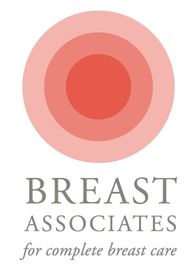Central Auckland, East Auckland, North Auckland, South Auckland, West Auckland > Private Hospitals & Specialists >
Breast Associates
Private Service, Breast
Today
Description
The breast specialists at Breast Associates are a team of experts who are able to provide the highest standards in complete breast care. Between them, they have cared for more than 30,000 since 1997.
Our Auckland breast clinic provides a caring and supportive environment, where trust and confidence are an integral part of patient care.
All consultations, breast imaging and diagnostic tests are available on site. A counseling service is also available.
Our team specialises in:
- Diagnosing and treating breast cancer
- Diagnosing breast lumps
- Breast reconstruction
- Diagnosing and treating breast infection
- Diagnosing and treating breast pain
- Discussing breast problems and family history
Our Breast Care Team
The Breast Associates team focuses on breast care, providing holistic, integrated care to manage your breast problem. Each breast doctor specialises either as a surgeon or a breast physician:
- Mr Alexander Ng – breast and melanoma surgical oncologist, general surgeon
- Mr Wayne Jones – general, breast and oncology surgeon
- Dr Eletha Taylor - breast and melanoma surgical oncologist, general surgeon
- Mr Michael Puttick - oncoplastic breast and general surgeon
- Dr Rachael Flanagan - breast and general surgeon
- Dr Marli Gregory – breast physician
Working alongside your breast doctor, our nurses and psychologist will also help you with your breast care:
- Geraldine Tennant - registered psychologist
- Jan - breast care nurse
- Louise - breast care nurse
- Tanya - breast care nurse
- Irma - breast care nurse
And when you visit Breast Associates breast centre you will also meet Margaret, Angele, Suzi and Bridget, our receptionists.
We work with Ascot Radiology to bring you the latest digital mammography, breast ultrasound and MRI imaging, ensuring the most accurate scans in the soonest time possible.
Consultants
-
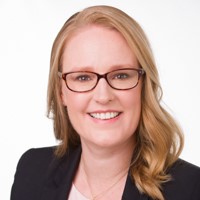
Dr Rachael Flanagan
Breast & General Surgeon
-
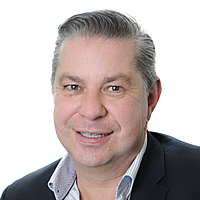
Mr Wayne Jones
General, Breast & Oncology Surgeon
-

Mr Alexander Ng
Melanoma, General & Breast Surgeon
-
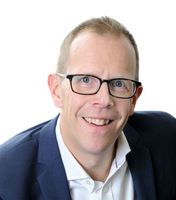
Mr Michael Puttick
Oncoplastic Breast and General Surgeon
-
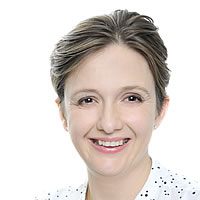
Dr Eletha Taylor
Breast, Melanoma & General Surgeon
Referral Expectations
Our online referral form can be found here
Fees and Charges Description
Breast Associates are a Southern Cross Affiliated Provider for certain services (please contact us to know more or check directly with Southern Cross). We can streamline the prior approval and claims processes for insured members.
Hours
| Mon – Fri | 8:30 AM – 5:00 PM |
|---|
Public Holidays: Closed ANZAC Day (25 Apr), King's Birthday (3 Jun), Matariki (28 Jun), Labour Day (28 Oct), Auckland Anniversary (27 Jan), Waitangi Day (6 Feb), Good Friday (18 Apr), Easter Sunday (20 Apr), Easter Monday (21 Apr).
Languages Spoken
Cantonese Chinese, English
Procedures / Treatments
In ultrasound, a beam of sound at a very high frequency (that cannot be heard) is sent into the body from a small vibrating crystal in a hand-held scanner head. When the beam meets a surface between tissues of different density, echoes of the sound beam are sent back into the scanner head. The time between sending the sound and receiving the echo back is fed into a computer, which in turn creates an image that is projected on a television screen. Ultrasound is a very safe type of imaging; this is why it is so widely used during pregnancy. What to expect? After lying down, the area to be examined will be exposed. Generally a contact gel will be used between the scanner head and skin. The scanner head is then pressed against your skin and moved around and over the area to be examined. At the same time the internal images will appear onto a screen.
In ultrasound, a beam of sound at a very high frequency (that cannot be heard) is sent into the body from a small vibrating crystal in a hand-held scanner head. When the beam meets a surface between tissues of different density, echoes of the sound beam are sent back into the scanner head. The time between sending the sound and receiving the echo back is fed into a computer, which in turn creates an image that is projected on a television screen. Ultrasound is a very safe type of imaging; this is why it is so widely used during pregnancy. What to expect? After lying down, the area to be examined will be exposed. Generally a contact gel will be used between the scanner head and skin. The scanner head is then pressed against your skin and moved around and over the area to be examined. At the same time the internal images will appear onto a screen.
In ultrasound, a beam of sound at a very high frequency (that cannot be heard) is sent into the body from a small vibrating crystal in a hand-held scanner head. When the beam meets a surface between tissues of different density, echoes of the sound beam are sent back into the scanner head. The time between sending the sound and receiving the echo back is fed into a computer, which in turn creates an image that is projected on a television screen. Ultrasound is a very safe type of imaging; this is why it is so widely used during pregnancy.
What to expect?
After lying down, the area to be examined will be exposed. Generally a contact gel will be used between the scanner head and skin. The scanner head is then pressed against your skin and moved around and over the area to be examined. At the same time the internal images will appear onto a screen.
Open Excisional: a small incision (cut) is made as close as possible to the lump and the lump, together with a surrounding margin of tissue, is removed for examination. If the lump is large only a portion of it may be removed. Fine Needle Aspiration: a needle is inserted through your skin into the breast lump and a sample of tissue is removed for examination.
Open Excisional: a small incision (cut) is made as close as possible to the lump and the lump, together with a surrounding margin of tissue, is removed for examination. If the lump is large only a portion of it may be removed. Fine Needle Aspiration: a needle is inserted through your skin into the breast lump and a sample of tissue is removed for examination.
Open Excisional: a small incision (cut) is made as close as possible to the lump and the lump, together with a surrounding margin of tissue, is removed for examination. If the lump is large only a portion of it may be removed.
Fine Needle Aspiration: a needle is inserted through your skin into the breast lump and a sample of tissue is removed for examination.
This may be: Simple or Total: all breast tissue, skin and the nipple are surgically removed but the muscles lying under the breast and the lymph nodes are left in place. Modified Radical: all breast tissue, skin and the nipple as well as some lymph tissue are surgically removed. Partial: the breast lump and a portion of other breast tissue (up to one quarter of the breast) as well as lymph tissue are surgically removed. Lumpectomy: the breast lump and surrounding tissue, as well as some lymph tissue, are surgically removed. When combined with radiation treatment, this is known as breast-conserving surgery.
This may be: Simple or Total: all breast tissue, skin and the nipple are surgically removed but the muscles lying under the breast and the lymph nodes are left in place. Modified Radical: all breast tissue, skin and the nipple as well as some lymph tissue are surgically removed. Partial: the breast lump and a portion of other breast tissue (up to one quarter of the breast) as well as lymph tissue are surgically removed. Lumpectomy: the breast lump and surrounding tissue, as well as some lymph tissue, are surgically removed. When combined with radiation treatment, this is known as breast-conserving surgery.
This may be:
Simple or Total: all breast tissue, skin and the nipple are surgically removed but the muscles lying under the breast and the lymph nodes are left in place.
Modified Radical: all breast tissue, skin and the nipple as well as some lymph tissue are surgically removed.
Partial: the breast lump and a portion of other breast tissue (up to one quarter of the breast) as well as lymph tissue are surgically removed.
Lumpectomy: the breast lump and surrounding tissue, as well as some lymph tissue, are surgically removed. When combined with radiation treatment, this is known as breast-conserving surgery.
When a breast has been removed (mastectomy) because of cancer or other disease, it is possible in most cases to reconstruct a breast similar to a natural breast. A breast reconstruction can be performed as part of the breast removal operation or can be performed months or years later. There are two methods of breast reconstruction: one involves using an implant; the other uses tissue taken from another part of your body. There may be medical reasons why one of these methods is more suitable for you or, in other cases, you may be given a choice. Implants A silicone sack filled with either silicone gel or saline (salt water) is inserted underneath the chest muscle and skin. Before being inserted, the skin will sometimes need to be stretched to the required breast size. This is done by placing an empty bag where the implant will finally go, and gradually filling it with saline over weeks or months. The bag is then replaced by the implant in an operation that will probably take 2-3 hours under general anaesthesia (you will sleep through it). You will probably stay in hospital for 2-5 days. Flap Reconstruction A skin flap taken from another part of the body such as your back, stomach or buttocks, is used to reconstruct the breast. This is a more complicated operation than having an implant and may last up to 6 hours and require a 5- to 7-day stay in hospital.
When a breast has been removed (mastectomy) because of cancer or other disease, it is possible in most cases to reconstruct a breast similar to a natural breast. A breast reconstruction can be performed as part of the breast removal operation or can be performed months or years later. There are two methods of breast reconstruction: one involves using an implant; the other uses tissue taken from another part of your body. There may be medical reasons why one of these methods is more suitable for you or, in other cases, you may be given a choice. Implants A silicone sack filled with either silicone gel or saline (salt water) is inserted underneath the chest muscle and skin. Before being inserted, the skin will sometimes need to be stretched to the required breast size. This is done by placing an empty bag where the implant will finally go, and gradually filling it with saline over weeks or months. The bag is then replaced by the implant in an operation that will probably take 2-3 hours under general anaesthesia (you will sleep through it). You will probably stay in hospital for 2-5 days. Flap Reconstruction A skin flap taken from another part of the body such as your back, stomach or buttocks, is used to reconstruct the breast. This is a more complicated operation than having an implant and may last up to 6 hours and require a 5- to 7-day stay in hospital.
When a breast has been removed (mastectomy) because of cancer or other disease, it is possible in most cases to reconstruct a breast similar to a natural breast. A breast reconstruction can be performed as part of the breast removal operation or can be performed months or years later.
There are two methods of breast reconstruction: one involves using an implant; the other uses tissue taken from another part of your body. There may be medical reasons why one of these methods is more suitable for you or, in other cases, you may be given a choice.
Implants
A silicone sack filled with either silicone gel or saline (salt water) is inserted underneath the chest muscle and skin. Before being inserted, the skin will sometimes need to be stretched to the required breast size. This is done by placing an empty bag where the implant will finally go, and gradually filling it with saline over weeks or months. The bag is then replaced by the implant in an operation that will probably take 2-3 hours under general anaesthesia (you will sleep through it). You will probably stay in hospital for 2-5 days.
Flap Reconstruction
A skin flap taken from another part of the body such as your back, stomach or buttocks, is used to reconstruct the breast. This is a more complicated operation than having an implant and may last up to 6 hours and require a 5- to 7-day stay in hospital.
Travel Directions
Public Transport
The Auckland Transport website is a good resource to plan your public transport options.
Parking
Car parking is available in the long stay parking area - there are parking machines available to enable payment for parking
Website
Contact Details
Ascot Central, 7 Ellerslie Racecourse Drive, Remuera, Auckland
Central Auckland
-
Phone
(09) 522 1346
Healthlink EDI
breastmk
Email
Website
Phone us for an appointment or contact us online here
7 Ellerslie Racecourse Drive
Remuera
Auckland 1051
Street Address
7 Ellerslie Racecourse Drive
Remuera
Auckland 1051
Postal Address
PO Box 28792
Remuera 1541
Was this page helpful?
This page was last updated at 3:28PM on December 5, 2023. This information is reviewed and edited by Breast Associates.

